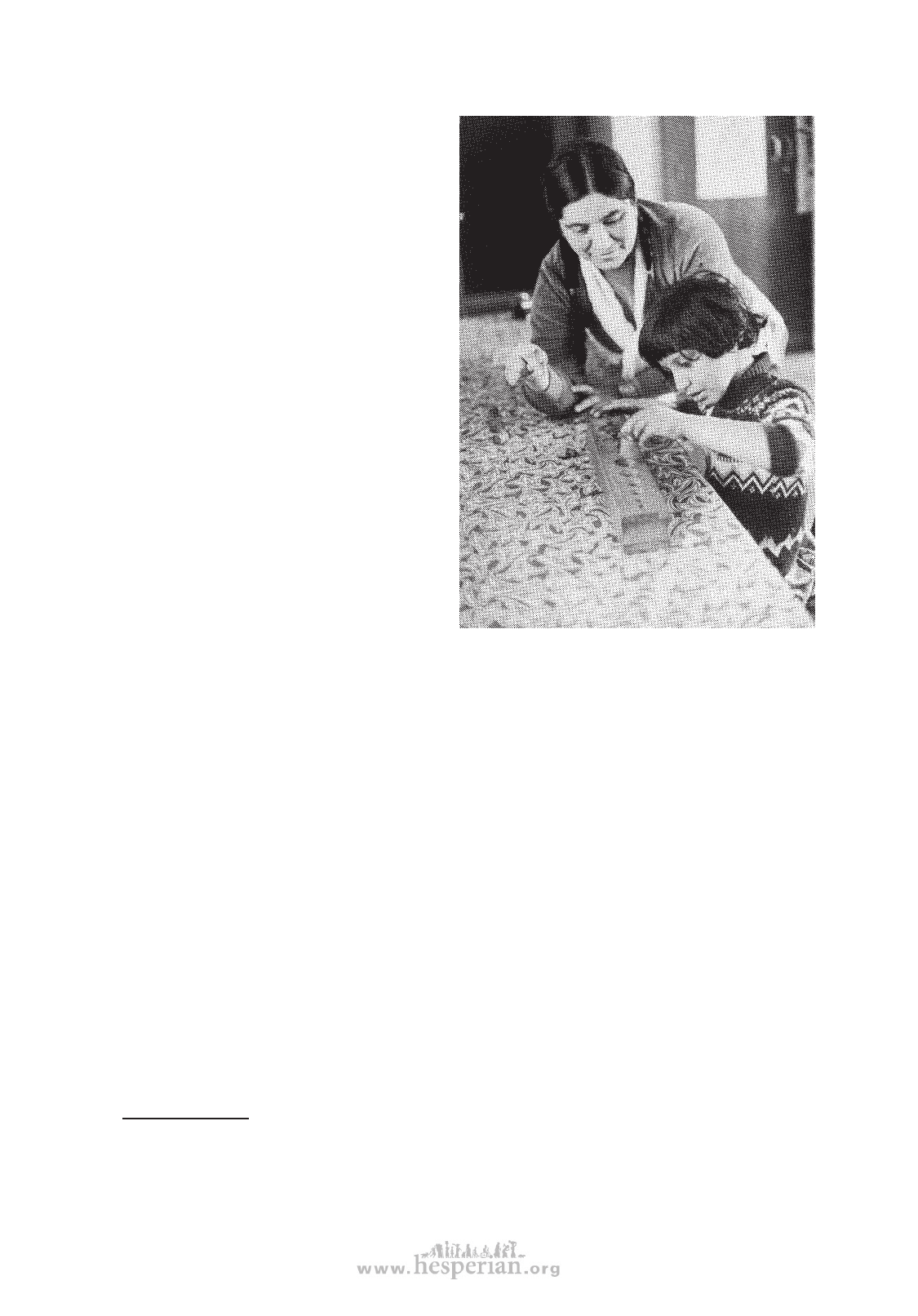
Helping the child make sense of his world
The ‘behavioral approach’ to
learning and development that we
have discussed is similar to what is
called ‘behavior therapy’ or ‘behavior
modification’. However, we prefer
to put the emphasis on improving
communication to help the child
make sense of the world around him.
Instead of our ‘changing the child’s
behavior’, we would rather help the
child to understand things clearly
enough so that he chooses to act in a
way that will make life more pleasant
for everyone.* To achieve this,
parents first learn to understand
and change their own behavior in
relating to their child. They look for
ways to communicate with the child
that are consistent and supportive,
and that reinforce good behavior.
LEARNING AND BEHAVIOR 355
A behavioral approach can often
help children who are mentally slow
or developmentally delayed, such
as Raúl and Erica, to relate to other
persons better and to learn basic skills
more quickly.
Giving lots of attention, encouragement, and
praise when he makes an effort is one of the best
ways to help a child learn new skills. Photo by
Sonia Iskov from Special Education for Mentally
Handicapped Pupils, see p. 640.
The approach can be used at almost any age. It is often easier with younger children
(developmental age from 1 to 4). Starting at a young age can prevent small behavioral
difficulties from becoming big problems later. For the very young or child with severe mental
slowness, goals must be kept basic, and progress toward the goals must be divided into
small steps. To master each step, much repetition may be needed with consistent praise
and rewards for each small advance.
Mentally normal children with physical disabilities sometimes also develop
unacceptable patterns of behavior. A behavioral approach may help them also. The
story on the next page tells how this approach helped Jorge, from p. 349, to behave
better.
*This is the point of view in Newson and Hipgrave’s Getting Through to Your Handicapped Child, from which
many ideas in this chapter are taken.
disabled village children